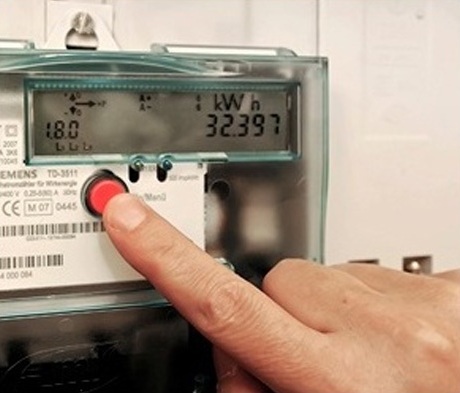The Union power ministry has targeted to completely migrate towards prepaid metering over the next few years. The tangible target is to install 25 crore prepaid meters in phases, with the first phase ending on December 31, 2023. This has been envisioned under the Revamped Distribution Sector Scheme (RDSS) announced in July 2021.
T&D India, in this special study, tries to understand the challenges involved in this exercise. India today has a sizeable population of smart meters — estimated at some 32 lakh, as of December 9, 2021. As against this, the population of prepaid meters, as of the same date, is only around 4.21 lakh. (Read separate T&D India story on prepaid meters)
The main objective of the study is to understand the technicalities involved whilst dealing with the existing population of smart meters, which are not of the prepaid type.
As one can readily appreciate it is the “prepayment option” embedded in a smart energy meter that makes it a “prepaid smart meter”. By default, a smart energy meter is assumed to be of the post-paid type. Hence, while every prepaid meter is a smart meter, every smart meter need not be a prepaid meter.
T&D India got in touch with Gautam Seth, Joint Managing Director, HPL Electric & Power Ltd, to gain insights into the issue. HPL Electric is a prominent manufacturer of energy and industrial meters, with a major market share in India’s energy metering market. The company also has to its credit the achievement of being the first domestic company to introduce Narrow Band Internet of Things (NB-IoT) technology in energy meters.
Giving an overview of his company’s track record, Gautam Seth noted, “We work hand in hand with India’s Smart Meter National Programme (SMNP). We have so far installed slightly more than 1.3 million smart meters, spread across states like Uttar Pradesh, New Delhi, Haryana, and Bihar. We have also received orders for the prepaid meters across the country.”
Coming to India’s prepaid metering goals, it can be appreciated that the existing population of non-prepaid smart meters (of around 32 lakh) is quite small when compared to the overall goal of 25 crore prepaid meters. The smart meters already installed are not necessarily equipped with the prepayment feature.
It must be appreciated that when India embarked on smart meters, as part of its pilot Smart Grid projects, the prepayment feature was not stressed upon. It was only with time that the inherent benefits of prepaid meters were recognized and such meters eventually became part of the national agenda. During the first wave of the pandemic, when issuance of physical bills was practically impossible, some state power utilities in Bihar, for instance, that had deployed prepaid meters did not have to face any loss in revenue. On the other hand, most utilities were grappling not only with issues like delayed bill dispatch, provisional billing and lower revenue realization, but they also had to contend with mounting consumer dissatisfaction.
In summary, converting the existing installed postpaid meters to prepaid ones could be achieved in two ways – converting the existing meter to prepaid through hardware/software intervention, or replacing the meter altogether.
Coming back to India’s installed base of smart meters (non prepaid), of the 32.86 lakh units, Uttar Pradesh has a dominant share of 35 per cent. States to follow include Rajasthan (12 per cent share), Bihar, Haryana (11 per cent each), Delhi (8 per cent) and Madhya Pradesh (7 per cent). Most of these installations have been the result of the Smart Meter National Programme (SMNP), spearheaded by nodal agency Energy Efficiency Services Ltd (EESL). Speaking of northeastern states, Assam is slated to be a big beneficiary of smart metering. Currently, this state has 1.85 lakh smart meters, including a small component of prepaid meters. A major prepaid meter rollout is also currently underway in Assam. [See table]
RDSS can be a big boost
The Union power ministry expects the cost borne by the project developer could be easily met from the discom’s increased revenue collection, which will accrue as a result of prepaid metering.
Besides, the Central government will also contribute by way of part-financing of fixed costs as well as through incentives. The Centre’s assistance would be a maximum of Rs.900 per meter for “other than special category” states/UTs, and Rs.1,350 per meter for “special category” states/UTs. Those states/UTs installing prepaid meters before December 31, 2023—the closing date of the first phase—will get an additional incentive of up to Rs.450 per meter for “other than special category” states/UTs and Rs.675 per meter for special category states/UTs.
Expressing his views on this innovative financing model, Gautam Seth noted, “This model can potentially encourage vendors that are generally unwilling to supply to certain states owing to payment-related concerns. HPL sees RDSS as a great opportunity.”
(Note: The “special category” states/UTs referred to in this story are: all the seven northeastern states, Sikkim, Himachal Pradesh, Uttarakhand, and the UTs of Jammu & Kashmir, Ladakh, Andaman & Nicobar Islands, and Lakshadweep.)

